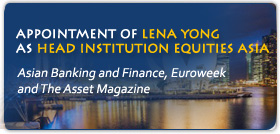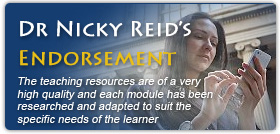Professional Client Acquisition and Activation for Trading Representatives
Click here to download the programme brochure
Programme Summary
This workshop aims to deepen the selling skills of Trading Representatives (TRs) who have learnt how to raise their service proficiency in part one of our financial sales training. As retail sales professionals, TRs depend on their own abilities to broaden their clientele via proper networking and prospecting. This workshop will enable them to build their personal brand in an effective manner.
Learning Outcomes
1. Learn to expand their customer base through referrals
2. Set meaningful goals
3. Be persuasive
4. Project a professional image while catering to the needs of clients
Duration: 2 days
Prerequisite: Attended Trading Representatives Sales Training 1 or have at least 3 years of relevant working experience
Course Outline
DAY 1
1. How to expand your clientele by sharpening your networking skills
You will learn:
a. What is business networking – understand what it takes to map, build and maintain a business network in the securities/capital markets industry: the strategy, preparation, planning and
approach to maximize networking events to seek the right customers who require your service.
b. Learn the “10 Commandments” of business networking which include:
i. Preparation & approachability – keep in mind that networking is about building relationships with existing and potential clients (retail investors), so financial sales people need to do their ‘homework’ and prepare for these events. For example if you participate in a road-show that is organized by or supported by your company, you should be familiar with all the financial products your company is offering even though you may not necessary be able to provide the service for that product (e.g.
SIPs)
ii. Common point of interest – your objective is to find people who want financial advice, so look for networking meetings which have participants who share that interest. Many
retail investors like to attend market update talks – this presents a good platform (common interest) to meet with potential clients.
iii. Leading questions & genuine interest – fostering and enhancing your relationship with potential clients require genuine interest in their well-being. You will need to ask leading
open-ended questions and show real interest to garner trust. Being able to help clients to avoid losses by itself would be very helpful and questions on avoiding difficult to
understand investment products could put you in the same shoes as the client.
iv. Body language – never cross your arms because of the negative connotation it portrays. Subtle but important, body language includes your handshake, posture, eye contact and maintaining various open positions to help you succeed in any networking meetings. In particular, financial sales mostly involve one-to-one meetings with clients, so closer attention to body language and non-verbal cues are important.
v. Various options for communicating with networking contacts – be ever ready to offer different points of contact with potential clients. Social media has also served as a new route for networking. Some TRs have taken to writing financial blogs.
vi. Building confidence – you need to start a conversation! There is no shortcut to this as practice makes for perfect. Learn to articulate what you offer from the standard question:
“How may I help you with your investment portfolio?”
vii. Never assume – in networking meetings, do not assume anything. All too often TRs assume that network participants will seek them out or know what investing is all about.
Also, people whom you met and remember may not remember you. You need to learn how to put your potential clients in their comfort zone.
viii. Be different – what is your ‘value proposition’? What makes you different from the other 3,000 TRs and how can you add value to your current and potential clients? Learn how to showcase individualism in order to get best referrals from networking events.
ix. Become a powerful resource for others – when you are known as a strong resource, people remember to turn to you for suggestions, ideas, names of other people, etc. which helps to keep you visible to them. It may be as simple as sending, on a regular basis, an email to clients on ideas to mitigate losses in a specific instrument like structured warrants, or a list of interesting investment books available online.
x. Follow up – find out what you need to do to follow through quickly and efficiently with referrals made at networking events. If you are professional and display urgency, your
referrals will grow because you respect the people who provide you with the contacts. Always continue to engage clients and potential clients, using the example in point ix
above.
Group Activity: Class will be divided into groups of 3-4 persons with discussion and roleplay. Each person in the group to relate their top 3 strategies based on the 10 points in this segment and discuss how they can improve on it.
c. Networking mistakes you should avoid – very common blunders you can prevent when you network. They include:
i. Going to any networking events expecting to find clients
ii. Passing out as many business cards as possible
iii. Not wasting time on ‘chit-chat’ and launch straight away on what you have to offer
iv. Trying to close the ‘sale’ right there and then because you may not have another opportunity
v. Following up with everyone with enticing offers but wonder why your potential clients
decline anyway
Group Activity: As part of the on-boarding process for new clients, a formal KYC/CAR is required by the broking firms. During the client engagement/acquisition phase, it would be useful to start the conversation with the potential clients on some of these points. Each class participant will discuss what are some questions or conversational points they could use when interviewing the client.
2. The Power to INFLUENCE Clients – Using the Science of Persuasion (from Dr. Robert Cialdini’s Influence At Work)
a. There are 6 powerful persuasion techniques that you can use to influence your clients’ thinking and decisions:
i. Reciprocation – focus on providing no-strings-attached value to your financial business network and you will wield more influence. Forwarding in-house stock research,
investment strategies from external publications or invitation to your firm’s economic outlook seminar are some examples.
ii. Commitment and consistency – as creatures of habit, it is good to remind your clients of their previous positive commitment towards supporting you in your sales efforts. That helps in acquiring referrals from them. This includes making regular phone calls or the sending of information in part “a” above on a regular/consistent basis, regardless of the
market direction (in bull or bear markets), or regardless when the client is in a profitable or loss making position.
iii. Social proof – we are most impressed when someone has a following. Therefore you should concentrate your social media efforts on building social proof. This technique is
most influential when there is uncertainty and you are developing your brand. Recommending well-written financial articles via the social media can be helpful – this is
something any TR can do, with just a bit of time and effort.
iv. Liking – customers are likely to agree with you when they find you “attractive” share some similarity with you or are familiar with you and when you compliment them. To do this, you would need to keep notes about the clients’ personal information and their portfolios. Also, liking is often linked with association business or otherwise. Therefore, when you are
associated with positive and good things, you will yield most influence.
v. Authority – when you show that you are an authority in a subject or you are in command or when you lead, you can be very persuasive. In the financial world, it is all about
knowledge and understanding of the markets and showcasing your ability to interpret information and aiding your clients in their investments. Writing an article or speaking at a
financial seminar are some examples, but it is not for everyone.
vi. Scarcity – there is more value placed on things when they are less available. Things that are difficult to acquire are more treasured than those that are easily attainable and people are more attracted to scarce resources when they compete with others for them.
b. Knowing your boundaries and ethics of Influence and Persuasion
i. Focus on creating value when selling financial products. This ties back to the KYC/CAR discussion and formal on-boarding exercise. TRs need to know the client’s needs,
circumstances and financial goals beforehand.
ii. Nurture your clientele and commit to consistent quality in offering your service. As financial professionals cannot guarantee the outcome of investments, one differentiator
would be the level of attentiveness and responsiveness to the clients.
iii. Use social proof to legitimize your credibility ethically when necessary.
iv. Get involved in positive ‘financial projects’ to get yourself psyched at what you accomplish but you will also be associated with the project.
v. If the situation requires immediate action, use the scarcity factor. But remember not to change the goal post if things do not work in your favor.
DAY 2
The second day further expands on client acquisition by the establishment of your own branding and purposeful goal setting in order to achieve success in your business.
3. Developing a strong business plan to build your Personal Brand and how this can help broaden your client base.
a. What is “personal branding” and why it is important in a financial business environment?
This involves your total perceived value, relative to your competitors as viewed by your clients.
The main elements to personal branding are:
i. Competencies – these are cognitive, business, communication and technical skills that enable you to be a good TR. This will include your ability to be the first to relay
information, interpret developments and provide value to your client’s investment decisions. With the continual development of financial products and services, TRs would
need to keep abreast and be suitably qualified to deal in these products. At the very least, knowledge of the key features and risks involved in these products would be
helpful.
ii. Personality – your values, goals and aspirations, identity and behaviour. These determine who you are so your clients know who they are dealing with.
iii. Personal appearance – this includes your attire, hygiene and presentation. A good benchmark would be how banks present their wealth management professionals, even at
the branch level.
The competition for the client’s investment dollars aren’t just among over 3,000 TRs but extends to the banking professionals as well. TRs would need to pay close attention to their personal branding and how it can complement the branding of their firm to attract and retain clients.
b. Using the 5 disciplines of success to build your brand: prospecting, nurturing, followingup, improving and personal development. These are important to:
i. Define yourself and then prospect based on that definition. By sticking to your area of ‘expertise’, your clients learn to recognise what you bring to the table as a financial sales
person. Is your expertise focused on local stocks, Emerging Markets or Global Equities? Does your trading platform offer other types of financial products besides stocks and
shares?
ii. Nurturing your brand means creating your own ‘celebrity’ status – this is done with testimonials, word of mouth (hence treating all your clients fairly and consistently goes a
long way) and social media (includes social media that is meant to be of a personal nature). This form of ‘advertising’ does not contravene regulations and will help you
establish presence in your business.
iii. Following-up means ensuring your ‘moments’ are memorable. It helps clients appreciate the uniqueness of your brand. It ensures that you remind your clients why you are special
and how you can continually serve them.
iv. Innovating your service will help to brand you – so personal development require you to constantly seek to improve yourself. Taking courses such as those offered by SGX
Academy and educating yourself, so that you are kept up-to-date with market trends, are integral parts of brand building.
Group Activity: the class will be divided into 4 groups. Each group to brainstorm 3 ideas for points i to iv, respectively. In terms of grouping the participants it is best to avoid clustering of groups by the level of experience they have in the financial industry.
c. Three “must-have” elements in your branding exercise – value proposition, differentiation and marketability.
d. How to use body language to impress clients, and subsequently in building client relationships as part of your personal branding exercise. Presenting yourself to your target audience does
not only involve your look but how you portray that role. As you build your personal brand and express your brand through your behaviour, these important questions need to be
answered:
i. How do I want to be perceived?
ii. What message does my body language need to send to create that perception?
iii. Which non-verbal communications will my clients respond to best?
iv. Specific to TRs, verbal communication is very important, so pay attention not only what you say but how you say it.
4. Using S-M-A-R-T goals to map your sales targets to raise efficiency and financial sales productivity
a. What are Specific, Measurable, Attainable, Relevant/Realistic and Time-bound goals in your business?
b. You will learn that S-M-A-R-T goals for you as a TR require the age-old adage of Mr. How and his 5 ‘Wives’:
i. The Who, What, Where, When, Why and the How in your goal setting. In a TR’s world, it will involve: the client, getting his business, within every environment and under all
sorts of circumstances (whether markets are up or down), in a professional and ethical manner so as to reach your sales target. Because of the nature of bull and bear markets, and the market structure, TRs should set higher targets during bull markets and lower targets during bear markets.
ii. There must be an objective set which can be measured and attained. Writing down the
plan is important because pie-in-the-sky targets will deflate your interest and you will
give up the chase if you feel the goal is too difficult.
iii. Your business plan must be relevant to you so you can measure your own abilities and
formulate an attainable strategy. To be realistic, this will entail your capabilities and your
willingness to achieve your goals. To add realism, TRs would also need to consider the
market environment (in terms of transacted volumes) when setting targets.
iv. Ultimately your target must be grounded within a time frame. Without the element of time, there will be no urgency. Some TRs are given monthly targets to hit, failing which they would have to shoulder part of the office overheads incurred by their respective companies. Having a monthly target, rolling into a quarterly and annual target could be
the starting point.
Individual Activity: each participant to write up short-term and longer-term objectives and a brief business plan. Volunteers (3-4 persons) to discuss their objectives and plans.
c. When would you consider raising the bar and apply S-M-A-R-T-E-R (Evaluate and Re-evaluate) elements to hit higher targets? This next level requires you to assess your personal achievements and adjust your goals if you exceed or fall below your stipulated plan.
d. The use of mind-mapping and goal setting to extend your sales productivity and raise your efficiency. There are 5 clear ways of adopting mind-mapping and they include:
v. Understanding your current situation – applying a SWOT analysis for focus
vi. Identifying goals
vii. Documenting your goals
viii. Implementing tasks to achieve your targets
ix. Reviewing regularly to check your progress.
e. The pitfalls of not having a sound business plan and why “mediocre” should never be your
option.
Trainer Profile
Lena Yong
As Executive Director and Chief Trainer, Lena drives the training curriculum at LIAM Consultants and oversees to material that are included in the training syllabus. She is key to the direction taken in the courses and holds a firm belief that everyone, if taught properly, can be a great sales person.
Lena brings to LIAM a wealth of sales experience both as a sales manager and as a sales person with over 28 years of experience in the financial industry. Trained as a company secretary and cost management accountant, her career in stockbroking began in late 1987 as an analyst. Lena subsequently spent 10 years researching a myriad of sectors including gaming, consumer, plantations and property with the former Baring Securities, SG Warburg as well as UBS. She then moved into institutional sales and was ranked in Asiamoney and other foreign and domestic polls including being named best salesperson in Malaysia for two years running by financial-based The Edge magazine.
She then headed sales teams in international equity houses such as CLSA and the Australian-based investment bank, Macquarie Group before she became Head of Institutional Sales Asia with Singaporebased regional house UOB Kay Hian. Lena is presently Head of Institutional Broking Asia with RHB Securities Singapore where she oversees to the entire Institutional Equities & Research teams in the five regional markets of Singapore, Malaysia, Hong Kong, Thailand and Indonesia.
Prior to joining the financial industry, Lena began her career as a business journalist in The Business Times in Malaysia.
Click here to download the programme brochure






